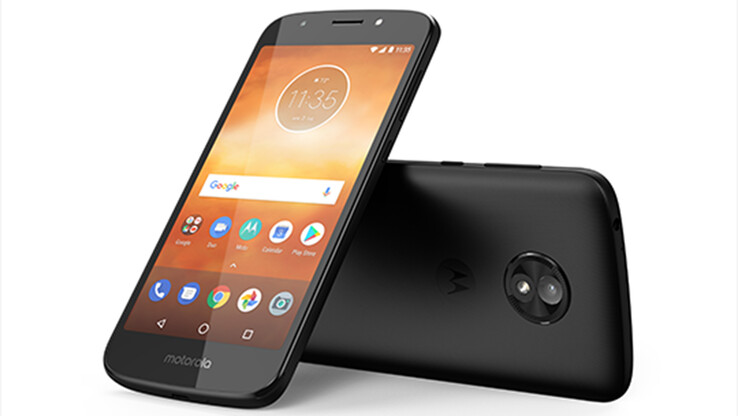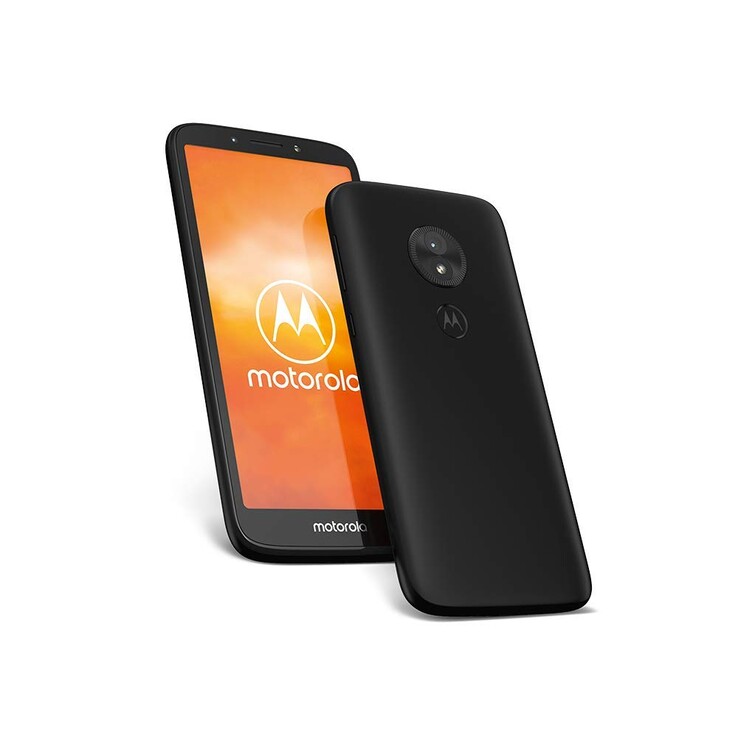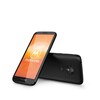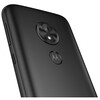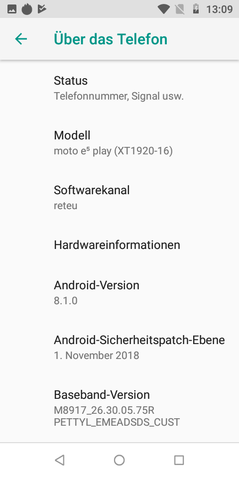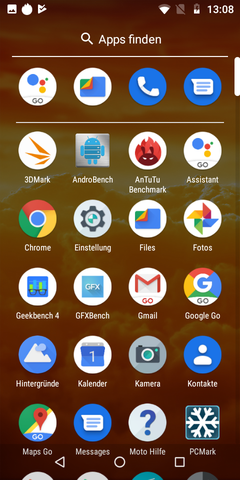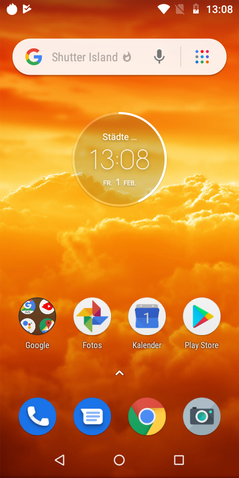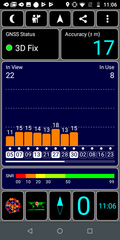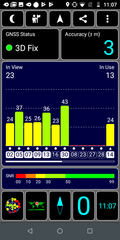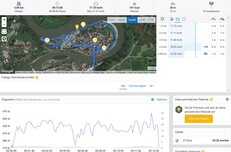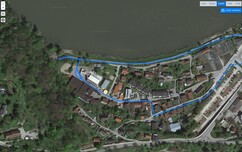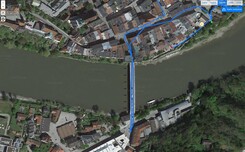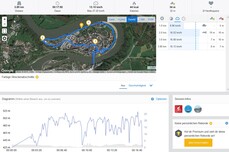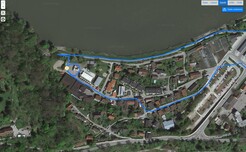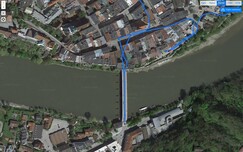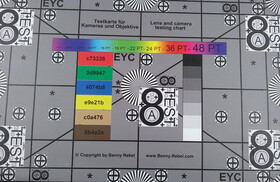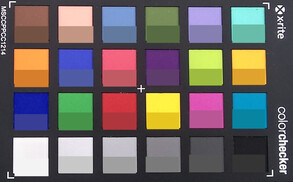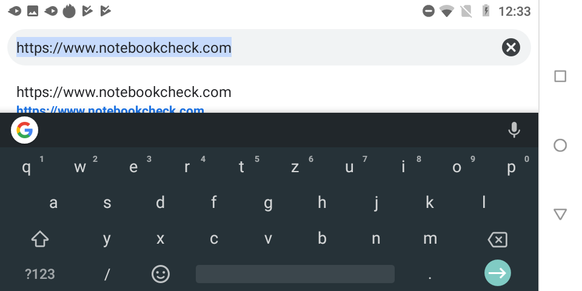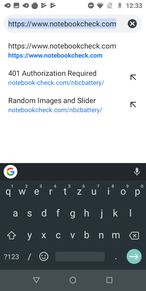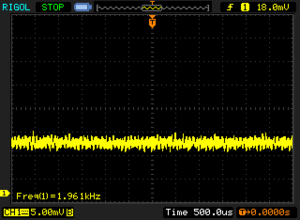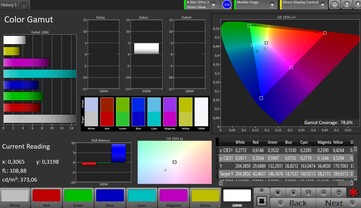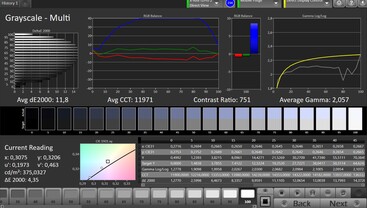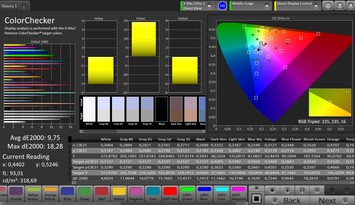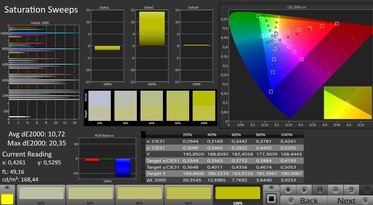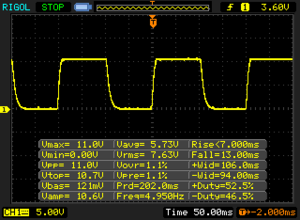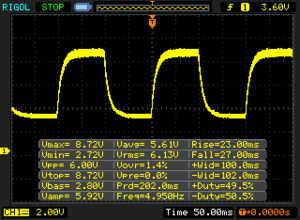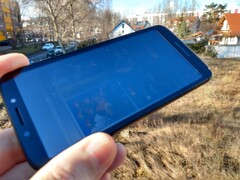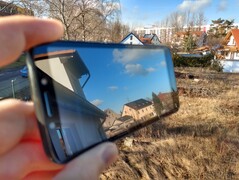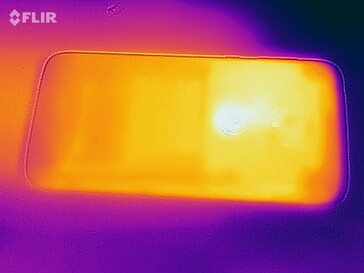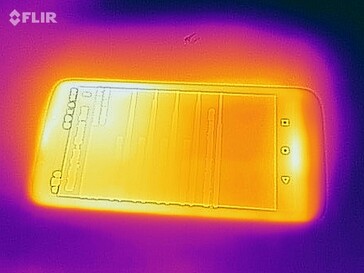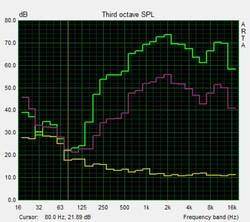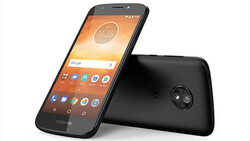Motorola Moto E5 Play Smartphone Review
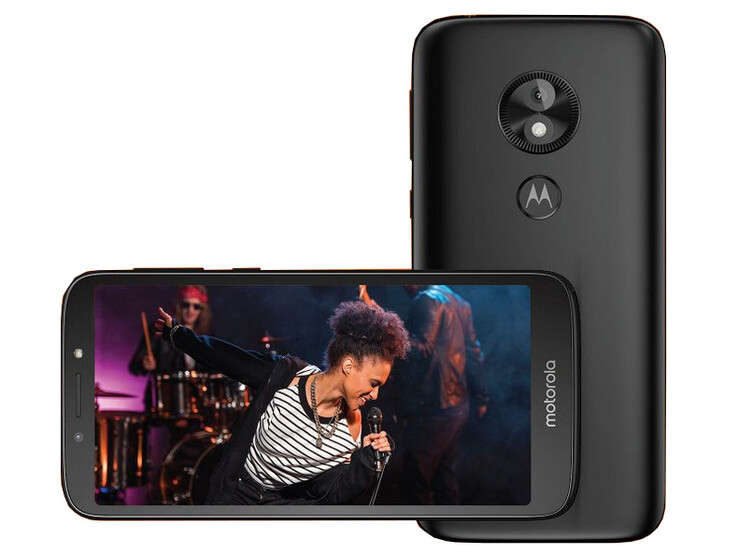
For quite some time midrange smartphones have been equipped well enough to satisfy even more-demanding users. However, the sub-$100 range is still a tough range to compete in despite the advances smartphones at large have made in recent years. Motorola’s E-series has been a notable exception, and the entire E-series line-up has been updated by Motorola once again with the Moto E5, Moto E5 Plus and today’s contender, the Moto E5 Play. The latter is the cheapest of the series yet still offers a large display, a fingerprint reader, and supposedly decent camera quality.
Competitors with comparable display sizes at a comparable price point are the Wiko Harry 2, the Nokia 3.1, and the Gigaset GS100.
Case
At first glance, the Moto E5 Play looks rather functional than cheap despite the prevalence of plastic. Build quality was superb, and we found no uneven gaps around the case. The phone also resisted our warping attempts very well and remained quiet. The power button and volume rocker at the right-hand side are firm and offer very pleasant travel and feedback.
The rear side is rather simple, with the fingerprint reader in the middle and a slightly protruding round camera module at the top. There are no optical highlights at all. The rear cover is removable, and underneath you get access to the user-replaceable battery, two SIM cards and a microSD card slot. The only color currently available is matte black.
Very clear indications for its low price of less than $100 are the wide bezels all around the display. While smartphones in the $200 range are starting to implement a notch more and more often in order to offer a superior screen-to-body ratio, Motorola’s E-series seems to be stuck in 2015.
Nevertheless, the bezels at the top and bottom are still acceptable. It’s the bezels on the sides that are more bothersome and that make the E5 Play look like it’s from another era. The 3.5-mm headphone jack at the top and the microUSB port at the bottom of the device do little to refute that notion.
In return, ergonomics is where the E5 Play truly shines. Granted, at 14.8 x 7.1 cm (5.8 x 2.8 inches) it is fairly large, mostly due to its wide bezels, and at 9.2 mm (0.36 inches) it is not particularly thin either. But it feels great in the hand thanks to its rounded edges and its roughened and slip-proof backside. Its weight of 150 g hits the sweet spot between heavy enough to feel premium yet not too hefty to feel cumbersome.
Connectivity
16 GB of internal storage (12 GB user-accessible) is nothing extraordinary in this price range, but thankfully storage can be extended with microSD cards of up to 128 GB. RAM, on the other hand, cannot and it is therefore limited to just 1 GB. In our opinion, no smartphone released in 2019 should feature just 1 GB of RAM since this limits the device’s usability quite dramatically. The microUSB port (USB 2.0) at the bottom supports USB-OTG but once again feels incredibly outdated given that it is, after all, 2019.
The same can be said about the 3.5-mm headphone jack at the top of the device. More and more midrange and premium smartphones do not come with an audio jack anymore. Given that Motorola does not even include a headset with the device, the port will only benefit those that still have an older headset at home that they intend to use. However, we would have preferred a USB-C port for sound, charging, and data transfers. NFC is not supported.
Software
The Moto E5 Play comes preloaded with Android 8.1.0 Go, which has been specifically tailored to low-cost devices with meager amounts of RAM and slow SoCs. It uses less internal storage, less RAM, and it is more efficient than regular Android. As is almost always the case with cheap smartphones we would not expect an update to Android 9 Pie. A telling indicator is the fact that security patches were still as of November 2018 when we reviewed the phone in early February 2019.
Besides the Moto help app there are no other apps preloaded on the device. Even the useful Moto Actions are missing completely. On the plus side this also includes unwanted bloatware. Several Google apps, such as Google Maps or YouTube, are available in a special Go version only.
Communication and GPS
More often than not cheap smartphones are characterized by poor wireless support, and the Moto E5 Play is no different. While it does support LTE, the featured bands are fairly limited, and the modem only allows LTE speeds of up to 150 Mb/s. That being said, the supported LTE bands should suffice unless you travel abroad regularly. Many midrange and premium smartphones support a wider variety of bands and are usually also much faster. Overall cellular reception in urban environments was excellent.
Wi-Fi is another category where Motorola had to opt for the cheap alternative. The device does not support the lesser-used 5 GHz range or ac-Wi-Fi. When connected to our Linksys EA8500 reference router the E5 Play turned out to be pretty slow and scored below average. Similarly priced devices, such as the Nokia 3.1 or the Gigaset GS100, transferred data around twice as fast.
| Networking | |
| iperf3 transmit AX12 | |
| Nokia 3.1 | |
| Gigaset GS100 | |
| Motorola Moto E5 Play | |
| Wiko Harry 2 | |
| iperf3 receive AX12 | |
| Nokia 3.1 | |
| Gigaset GS100 | |
| Wiko Harry 2 | |
| Motorola Moto E5 Play | |
In return, GPS connectivity was excellent. The E5 Play performed remarkably well on our bike ride around the block, during which we compared it to a professional Garmin Edge 520 GPS unit. Occasionally, it was even more accurate than the latter, and at the end of our trip the overall tracking results were very similar between the two. This accuracy was further confirmed during our indoor GPS tests.
Indoor accuracy was determined to be around 15-20 meters after about a minute, which is remarkable for a cheap smartphone. Out in the open the E5 Play only took a few seconds to connect to more than 10 satellites and obtain GPS lock at an accuracy of 5 m.
Telephony and Call Quality
Unsurprisingly, Motorola opted for the default Android Go telephone app. However, call quality was disappointing by and large. While voices were very clear and loud in general, the speaker tended to reverberate and clatter very noticeably at high volumes. The microphone was very reliable in recording both loud noises and low murmurs. Speakerphone call quality was decent, and the speaker performed well and loud enough.
Cameras
As expected, the cameras were not the most sophisticated. The rear-facing camera features an 8 MP sensor while the front-facing shooter is limited to just 5 MP. Both feature an LED flash that helps to alleviate their biggest weakness: poor light sensitivity. Unsurprisingly, the cameras performed rather poorly when compared to more-expensive counterparts. However, they did a fairly good job in bright daylight.
Images sharpness was decent overall, however we would advise against large prints or magnification. Image quality and focus deteriorated very dramatically with decreasing light, and the increased exposure led to even more loss of focus. In addition, shutter lag increased noticeably as well, and the combination of these two factors resulted in a very blurry image since the camera is regularly moved too quickly after releasing the trigger.
We found a rather pronounced noise in darker areas of the photos. In addition to low light, both cameras - particularly the front-facing once - also suffered from low contrast. Even in bright daylight photos taken with the rear-facing 8 MP camera were visibly pale. At least the Auto HDR feature made for decent dynamic range. The front-facing shooter lacks this feature, and accordingly bright backgrounds are overexposed and dark foregrounds are too dark due to lack of dynamic range. Color accuracy could also need improvement. We found significant deviations when reviewed under normalized conditions in our lab, which were fortunately invisible to the naked eye under normal circumstances in everyday use.
Videos are recorded in FHD at 30 FPS and are smooth as long as the camera is held perfectly still. Unfortunately, panning resulted in noticeable frame drops due to the low frame rate, and the lack of optimal image stabilization requires a very steady hand or, better yet, a tripod.
Accessories and Warranty
In order to keep the price as low as possible Motorola opted to include only the bare minimum in the box: a USB cable, a charger, a quick-start guide, and a warranty leaflet. The 5 W charger only takes around 1.75 hours to charge the smartphone from near empty to full. Unlike their European counterparts, devices sold in the US are limited to just 12 months of warranty. Please see our Guarantees, Return policies and Warranties article for country-specific information.
Input Devices & Handling
The E5 Play’s capacitive touchscreen was sufficiently snappy and accurate, and it worked very well up to its edges. Due to the slow hardware, rotating the screen from portrait to landscape mode can be painfully slow. Unfortunately, even in 2019 this sort of lag is still fairly common for devices in this price range. In return, our review unit boasted a fingerprint reader, which worked remarkably well considering the E5 Play’s low price.
There is a short lag between the vibration that signifies a successful unlock and the activation of the display but at least the fingerprint reader was very accurate and reliable. The physical buttons on the right-hand side offered a very nice pressure point and decent travel and feedback.
Display
The 5.2-inch display features a native resolution of just 960x480 pixels, and accordingly it has a comparatively low pixel density of just 206 PPI. Truth be told, the low resolution is noticeable at close distance. We would have expected at least 720p or more even in an entry-level smartphone.
The modern 18:9 display ratio has its pros and cons. On the plus side it offers additional screen real estate when browsing the web, but on the downside 16:9 YouTube videos are framed with massive black bars on both sides.
| |||||||||||||||||||||||||
Brightness Distribution: 81 %
Center on Battery: 369 cd/m²
Contrast: 923:1 (Black: 0.4 cd/m²)
ΔE ColorChecker Calman: 9.75 | ∀{0.5-29.43 Ø4.77}
ΔE Greyscale Calman: 11.8 | ∀{0.09-98 Ø5}
78.6% sRGB (Argyll 1.6.3 3D)
Gamma: 2.057
CCT: 11971 K
| Motorola Moto E5 Play IPS, 960x480, 5.2" | Wiko Harry 2 1440x720, 5.5" | Gigaset GS100 IPS, 1440x720, 5.5" | Nokia 3.1 IPS, 1440x720, 5.2" | |
|---|---|---|---|---|
| Screen | 47% | 18% | 46% | |
| Brightness middle (cd/m²) | 369 | 479 30% | 442 20% | 506 37% |
| Brightness (cd/m²) | 358 | 491 37% | 446 25% | 490 37% |
| Brightness Distribution (%) | 81 | 87 7% | 86 6% | 93 15% |
| Black Level * (cd/m²) | 0.4 | 0.2 50% | 0.35 12% | 0.24 40% |
| Contrast (:1) | 923 | 2395 159% | 1263 37% | 2108 128% |
| Colorchecker dE 2000 * | 9.75 | 6.17 37% | 8.03 18% | 6.4 34% |
| Colorchecker dE 2000 max. * | 18.28 | 11.46 37% | 15.81 14% | 11.1 39% |
| Greyscale dE 2000 * | 11.8 | 7.1 40% | 10.4 12% | 7.5 36% |
| Gamma | 2.057 107% | 2.066 106% | 2.02 109% | 2.2 100% |
| CCT | 11971 54% | 8441 77% | 10070 65% | 8643 75% |
| Color Space (Percent of sRGB) (%) | 78.6 | 98.2 25% |
* ... smaller is better
Screen Flickering / PWM (Pulse-Width Modulation)
| Screen flickering / PWM detected | 1961 Hz | ≤ 15 % brightness setting | |
The display backlight flickers at 1961 Hz (worst case, e.g., utilizing PWM) Flickering detected at a brightness setting of 15 % and below. There should be no flickering or PWM above this brightness setting. The frequency of 1961 Hz is quite high, so most users sensitive to PWM should not notice any flickering. In comparison: 53 % of all tested devices do not use PWM to dim the display. If PWM was detected, an average of 8080 (minimum: 5 - maximum: 343500) Hz was measured. | |||
With an average maximum brightness of just 360 nits the E5 Play was outperformed not just by more-expensive competitors. It also suffered from a rather poor brightness distribution, a high black level, and consequently also a low contrast ratio.
We barely noticed these downsides during everyday use. However, the slightly elevated color temperature resulting in a cool overall appearance was very obvious and further confirmed by our CalMAN measurements. At least we found no signs of PWM flickering. If it does exist at all then the frequency must be very high.
Display Response Times
| ↔ Response Time Black to White | ||
|---|---|---|
| 20 ms ... rise ↗ and fall ↘ combined | ↗ 7 ms rise | |
| ↘ 13 ms fall | ||
| The screen shows good response rates in our tests, but may be too slow for competitive gamers. In comparison, all tested devices range from 0.1 (minimum) to 240 (maximum) ms. » 42 % of all devices are better. This means that the measured response time is similar to the average of all tested devices (20.2 ms). | ||
| ↔ Response Time 50% Grey to 80% Grey | ||
| 50 ms ... rise ↗ and fall ↘ combined | ↗ 23 ms rise | |
| ↘ 27 ms fall | ||
| The screen shows slow response rates in our tests and will be unsatisfactory for gamers. In comparison, all tested devices range from 0.165 (minimum) to 636 (maximum) ms. » 86 % of all devices are better. This means that the measured response time is worse than the average of all tested devices (31.6 ms). | ||
The display’s largest deficit was its poor viewing angles. Not only did it suffer from a fairly common shadowing and loss of contrast at acute angles, it also showed different levels thereof depending on what side it was viewed from. For example, in portrait mode the shadowing and loss of contrast and color when viewed from the top was very pronounced. In return, tilting it left and right was nowhere near as bad. The display’s low maximum brightness was quickly overpowered by reflections in bright sunlight.
Performance
Unlike many other entry-level smartphones the Moto E5 Play is not equipped with a MediaTek SoC but has a comparatively slow Snapdragon 425 combined with an Adreno 308 GPU instead. It performed as expected for its class.
| PCMark for Android | |
| Work performance score (sort by value) | |
| Motorola Moto E5 Play | |
| Wiko Harry 2 | |
| Nokia 3.1 | |
| Average Qualcomm Snapdragon 425 (MSM8917) (3681 - 5253, n=17) | |
| Work 2.0 performance score (sort by value) | |
| Motorola Moto E5 Play | |
| Wiko Harry 2 | |
| Gigaset GS100 | |
| Nokia 3.1 | |
| Average Qualcomm Snapdragon 425 (MSM8917) (2829 - 3831, n=18) | |
| AnTuTu v6 - Total Score (sort by value) | |
| Motorola Moto E5 Play | |
| Wiko Harry 2 | |
| Gigaset GS100 | |
| Nokia 3.1 | |
| Average Qualcomm Snapdragon 425 (MSM8917) (29054 - 39106, n=17) | |
In everyday use the device was fast enough for simple tasks such as browsing the web, watching videos, or flicking through one’s photos. This quickly changed with an increasing number of simultaneously open applications or more-demanding applications in general. In these cases frame drops become quite common and images loaded noticeably slower when browsing the web.
| JetStream 1.1 - Total Score | |
| Nokia 3.1 (Chrome 67) | |
| Average Qualcomm Snapdragon 425 (MSM8917) (15.5 - 18.7, n=16) | |
| Wiko Harry 2 (Chrome 71) | |
| Motorola Moto E5 Play | |
| Gigaset GS100 (Chrome 68) | |
| Octane V2 - Total Score | |
| Average of class Smartphone (2228 - 126661, n=196, last 2 years) | |
| Nokia 3.1 (Chrome 67) | |
| Average Qualcomm Snapdragon 425 (MSM8917) (2411 - 3374, n=17) | |
| Wiko Harry 2 (Chrome 71) | |
| Motorola Moto E5 Play | |
| Gigaset GS100 (Chrome 68) | |
| Mozilla Kraken 1.1 - Total | |
| Wiko Harry 2 (Chrome 71) | |
| Gigaset GS100 (Chrome 68) | |
| Nokia 3.1 (Chrome 67) | |
| Motorola Moto E5 Play | |
| Average Qualcomm Snapdragon 425 (MSM8917) (10742 - 16192, n=17) | |
| Average of class Smartphone (257 - 28190, n=156, last 2 years) | |
* ... smaller is better
The internal storage was decently fast for its class; however, the microSD card reader was not. When reading from and writing to our Toshiba Exceria Pro M501 reference card the Moto E5 Play's competitors were up to twice as fast.
| Motorola Moto E5 Play | Wiko Harry 2 | Gigaset GS100 | Nokia 3.1 | Average 16 GB eMMC Flash | Average of class Smartphone | |
|---|---|---|---|---|---|---|
| AndroBench 3-5 | 2% | -27% | -1% | -31% | 1363% | |
| Sequential Read 256KB (MB/s) | 279 | 227.3 -19% | 97.2 -65% | 281.5 1% | 164.5 ? -41% | 2242 ? 704% |
| Sequential Write 256KB (MB/s) | 52.2 | 59.1 13% | 24 -54% | 35.26 -32% | 43 ? -18% | 1881 ? 3503% |
| Random Read 4KB (MB/s) | 46.31 | 35.47 -23% | 17.6 -62% | 48.62 5% | 21.7 ? -53% | 299 ? 546% |
| Random Write 4KB (MB/s) | 43.16 | 11.6 -73% | 6.2 -86% | 9.2 -79% | 8.08 ? -81% | 345 ? 699% |
| Sequential Read 256KB SDCard (MB/s) | 83.7 ? | 80.3 ? -4% | 79.5 ? -5% | 77.2 ? -8% | 59.1 ? -29% | |
| Sequential Write 256KB SDCard (MB/s) | 28.83 ? | 63.4 ? 120% | 61 ? 112% | 59.8 ? 107% | 39.8 ? 38% |
Gaming
Why Motorola decided to suffix one of its slowest phones with the word “Play” remains a mystery to us. Due to its lethargic hardware the entry-level E5 Play was unable to even run all the games and is thus anything but future-proof. For example, we were unable to find and download Asphalt 9 in the Play Store because the developers have deemed the Moto E5 Play too slow for this game.
In return, Shadow Fight 3 ran smoothly with only minor occasional frame drops, and casual games such as Temple Run 2 or Angry Birds ran perfectly smooth. Touchscreen and orientation sensor worked flawlessly by and large.
Emissions
Temperature
When gaming, the E5 Play was significantly warmer than when idle. However, it never reached uncomfortable levels. Generally speaking, it remained inconspicuous.
(+) The maximum temperature on the upper side is 37.7 °C / 100 F, compared to the average of 35.2 °C / 95 F, ranging from 21.9 to 247 °C for the class Smartphone.
(+) The bottom heats up to a maximum of 37.7 °C / 100 F, compared to the average of 34 °C / 93 F
(+) In idle usage, the average temperature for the upper side is 28 °C / 82 F, compared to the device average of 32.9 °C / 91 F.
Speakers
The single front-facing speaker was located at the top of the device. It is not just a speaker, it is also the device’s earphone. It was fairly balanced and loud enough and did not distort noticeably when playing media (even though it did on speakerphone). The device also supports Bluetooth and 3.5-mm headphones, and both worked flawlessly. A headset was not included in the box.
Motorola Moto E5 Play audio analysis
(±) | speaker loudness is average but good (81.1 dB)
Bass 100 - 315 Hz
(-) | nearly no bass - on average 64.4% lower than median
(+) | bass is linear (0% delta to prev. frequency)
Mids 400 - 2000 Hz
(-) | nearly no mids - on average 64.4% lower than median
(+) | mids are linear (0% delta to prev. frequency)
Highs 2 - 16 kHz
(-) | nearly no highs - on average 64.4% lower than median
(+) | highs are linear (0% delta to prev. frequency)
Overall 100 - 16.000 Hz
(-) | overall sound is not linear (116.4% difference to median)
Compared to same class
» 87% of all tested devices in this class were better, 5% similar, 8% worse
» The best had a delta of 11%, average was 35%, worst was 134%
Compared to all devices tested
» 96% of all tested devices were better, 2% similar, 2% worse
» The best had a delta of 4%, average was 24%, worst was 134%
Nokia 3.1 audio analysis
(+) | speakers can play relatively loud (85.9 dB)
Bass 100 - 315 Hz
(-) | nearly no bass - on average 36.8% lower than median
(±) | linearity of bass is average (7.8% delta to prev. frequency)
Mids 400 - 2000 Hz
(+) | balanced mids - only 4.8% away from median
(±) | linearity of mids is average (7.2% delta to prev. frequency)
Highs 2 - 16 kHz
(±) | higher highs - on average 5.6% higher than median
(+) | highs are linear (3.7% delta to prev. frequency)
Overall 100 - 16.000 Hz
(±) | linearity of overall sound is average (26% difference to median)
Compared to same class
» 65% of all tested devices in this class were better, 6% similar, 28% worse
» The best had a delta of 11%, average was 35%, worst was 134%
Compared to all devices tested
» 79% of all tested devices were better, 4% similar, 16% worse
» The best had a delta of 4%, average was 24%, worst was 134%
Battery Life
At just 2,120 mAh the removable battery is comparatively small. Accordingly, the E5 Play only lasted for 383 minutes in our real-world Wi-Fi test.
Power Consumption
Fortunately, overall power consumption was pretty good for its class thanks to the efficient Snapdragon SoC. In direct comparison, MediaTek SoCs tend to be more demanding.
| Off / Standby | |
| Idle | |
| Load |
|
Key:
min: | |
| Motorola Moto E5 Play 2120 mAh | Wiko Harry 2 2900 mAh | Gigaset GS100 3000 mAh | Nokia 3.1 2990 mAh | Average Qualcomm Snapdragon 425 (MSM8917) | Average of class Smartphone | |
|---|---|---|---|---|---|---|
| Power Consumption | -19% | -25% | 10% | -20% | -37% | |
| Idle Minimum * (Watt) | 1.2 | 1.2 -0% | 1.3 -8% | 0.68 43% | 1.113 ? 7% | 0.847 ? 29% |
| Idle Average * (Watt) | 1.6 | 2 -25% | 2.1 -31% | 1.33 17% | 2.19 ? -37% | 1.446 ? 10% |
| Idle Maximum * (Watt) | 2 | 2.7 -35% | 2.9 -45% | 1.37 31% | 2.55 ? -28% | 1.63 ? 18% |
| Load Average * (Watt) | 3.6 | 4.2 -17% | 4.4 -22% | 4.02 -12% | 4.32 ? -20% | 6.95 ? -93% |
| Load Maximum * (Watt) | 4.5 | 5.2 -16% | 5.3 -18% | 5.89 -31% | 5.5 ? -22% | 11.3 ? -151% |
* ... smaller is better
| Motorola Moto E5 Play 2120 mAh | Wiko Harry 2 2900 mAh | Gigaset GS100 3000 mAh | Nokia 3.1 2990 mAh | |
|---|---|---|---|---|
| Battery runtime | ||||
| WiFi v1.3 (h) | 6.4 | 10.2 59% | 8.9 39% | 9.4 47% |
Pros
Cons
Verdict
At the time of writing the lowest price we found was just $80, and thus significantly below Motorola’s MSRP of $130. At this price you cannot really go wrong with the E5 Play, especially considering that the similarly priced competition is not any better. However, don’t let the name “Play” fool you - if you intend to enjoy any kind of gaming on your smartphone then the E5 Play is definitely not the right phone for you. It still offers a very decent price-performance ratio, though.
In addition to its lack of noteworthy highlights we found a few drawbacks, chiefly among which was the fact that the device was limited to just 1 GB of RAM. Granted, it does come with Android Go, a flavor of Android specifically made for low-performance devices such as this. However, we should also keep in mind that smartphones are slowly moving into desktop PC territory when it comes to RAM, and devices on the other side of the spectrum can feature up to 10 GB thereof. The low-resolution display, the poor viewing angles, and the poor battery life do little to make the E5 Play more appealing. On the plus side the cameras are decent, the battery is user-replaceable, and the design is elegant and modern considering its low price.
Motorola’s Moto E5 Play is aimed at minimalists looking for a smartphone to last one or maybe two years.
If you are considering getting a smartphone for a year or two you might want to reconsider and look for a slightly more-expensive device with at least 2 GB of RAM, such as the Wiko Harry 2 or the Xiaomi Redmi 6A.
Motorola Moto E5 Play
- 02/06/2019 v6 (old)
Stefan Schomberg


